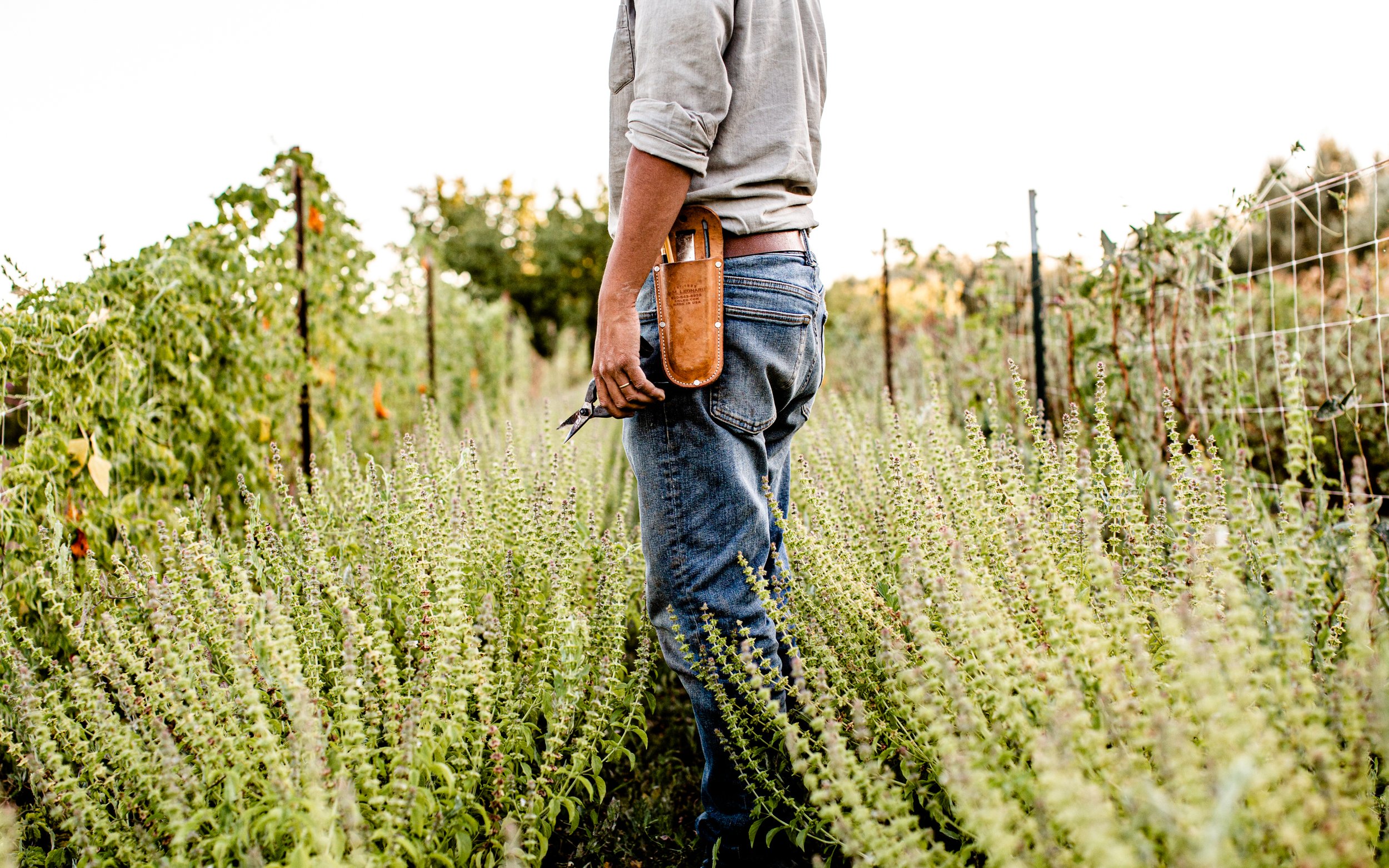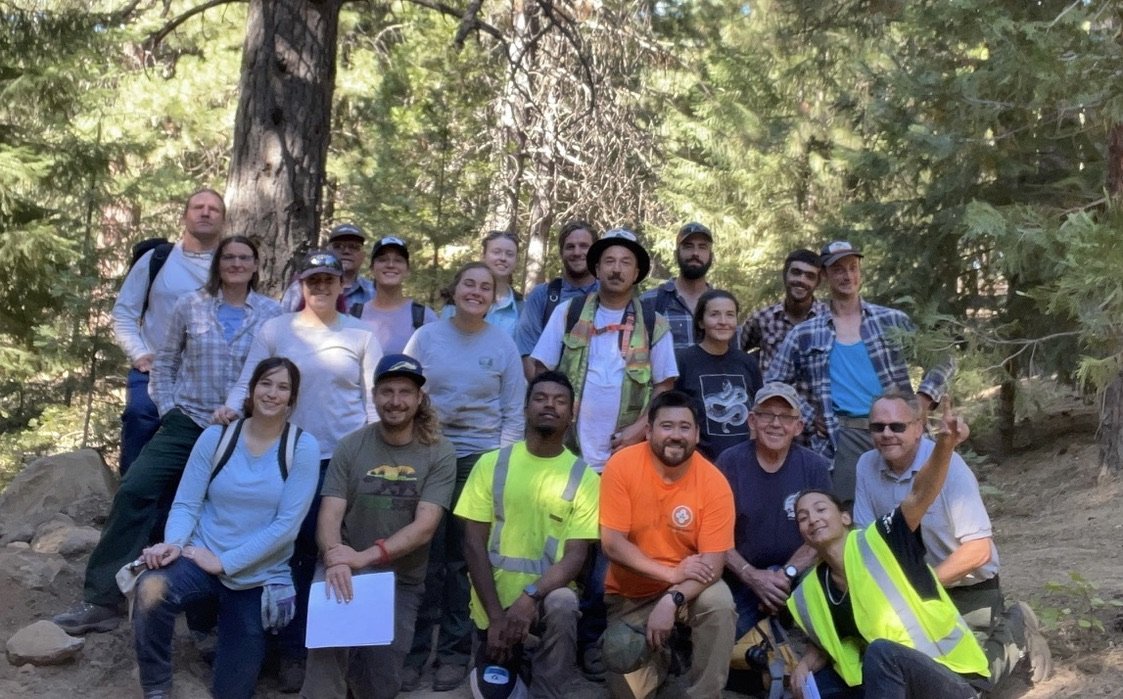Farming in the Era of Climate Change
April 25th, 2024
Introducing Our Climate Resiliency Series…
This series includes three farmer and rancher client stories focused on drought, fire, and flood. Our intention is to provide a deeper picture of the climate crises facing Northern and Central California regions, the direct impact on individuals and businesses within our client community, and the enduring resilience our clients reflect in adapting and rebuilding. Learn about KTA’s response to supporting these clients and how you can join us in strengthening our collective resilience toward ongoing shifts in our climate.
Note: This series will discuss some intense experiences and events that may be triggering for some individuals.
A Complex Reality
[Read time: 1 minute]
A statewide drought leaving thousands without reliable access to water. Catastrophic fires burning hundreds of miles of land across California. Torrential storms and floods destroying fields, infrastructure, homes, and more. The reality of climate change is no longer distant — it is now, happening quickly and across a massive scale. Over the past years, small farmers and ranchers across California have been subjected not only to a worldwide pandemic, but also the worsening effects of climate change, seen in fires, droughts, floods, storms, and extreme heat. Their businesses and livelihoods have been tested time and again, forcing business owners to tap into a dwindling supply of resilience to keep themselves, their families, and their businesses afloat.
Our team at Kitchen Table Advisors has witnessed farms and ranches in our client community close down, lose revenues and necessary infrastructure, and shift markets and locations, while the business owners have endured trauma, health issues, and loss in the wake of these catastrophic events. And yet, we have also simultaneously seen farm businesses adapt and grow deeper roots in their communities, fostering hope, creativity, and collaboration.
Over the next month, KTA is sharing three client stories through our series on climate. Focused on drought, fire, and flood, we will bring you into the complex reality of farming in the age of climate change. You will hear about our clients navigating and working to recover from these crises, and the resilience that underscores it all. These stories remind us of the shared work to be done both now and into the future to safeguard a livable and resilient climate.
Ready to jump into action?
Support KTA clients in crisis now, and check out other ways to contribute to, advocate alongside, and otherwise support climate resiliency within our foodshed.
Floods - Nancy Nuñez of Picoso Farm
(Central Coast)
[Read time: 7 minutes]
Maria “Nancy” Nuñez of Picoso Farm started her business with her partner Jose back in 2018 with two goals: to nourish their community and create a sustainable livelihood for their family. At first, they started by growing only 6 rows of strawberries, wanting to see if an agricultural business was viable for their family. They initially sold their berries through a farmstand located next to Highway 101 in Gilroy, capitalizing on their highly trafficked location and fostering a name for their business within the community. Fueled by their initial success and the connections they seeded, Nancy and Jose eventually scaled up from 6 rows of strawberries to 4 acres. As their business grew, Nancy continued to maintain personal relationships with her customers when expanding into farmers markets, cultivating loyal, lasting connections for her business. It was during this time that Nancy and Jose started looking towards buying themselves and their five children a permanent home and farmland to establish roots together.
Nancy was one of many farmers KTA supported who experienced the 2023 winter storms and floods firsthand, with both her business and dream of home ownership drastically transformed. In the winter of 2023, a series of atmospheric rivers swept across Northern and Central California with torrential rain, wind, landslides, and floods destroying communities. The storms hit intensely and quickly, giving communities little time to react before the impacts of the flooding intensified. By January, over 500,000 homes and businesses across California were left without power with 96,000 residents evacuated. Farmers and ranchers across the San Mateo Coast, North Bay, Yolo and Sacramento Counties, and Central Coast experienced hundreds of thousands of dollars in damage as the floods washed away crops, tools, infrastructure, and even houses. Most of all, many of these individuals endured immeasurable trauma as they tried to respond and recover in the storms’ wake. Atmospheric rivers are expected to intensify and become more frequent while our food system expects that small producers can not only withstand them, but sustain a livelihood despite limited capital and resources.
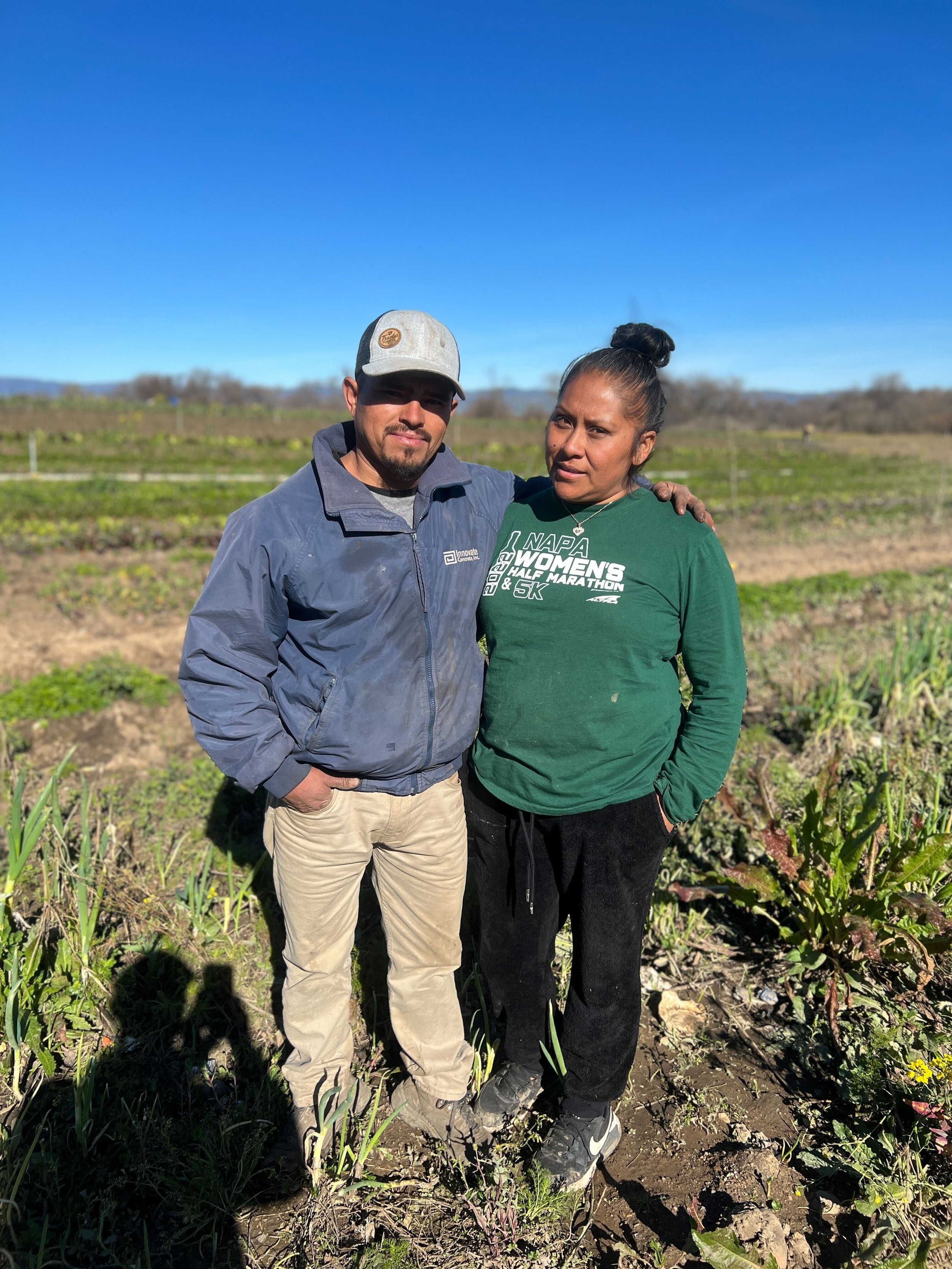
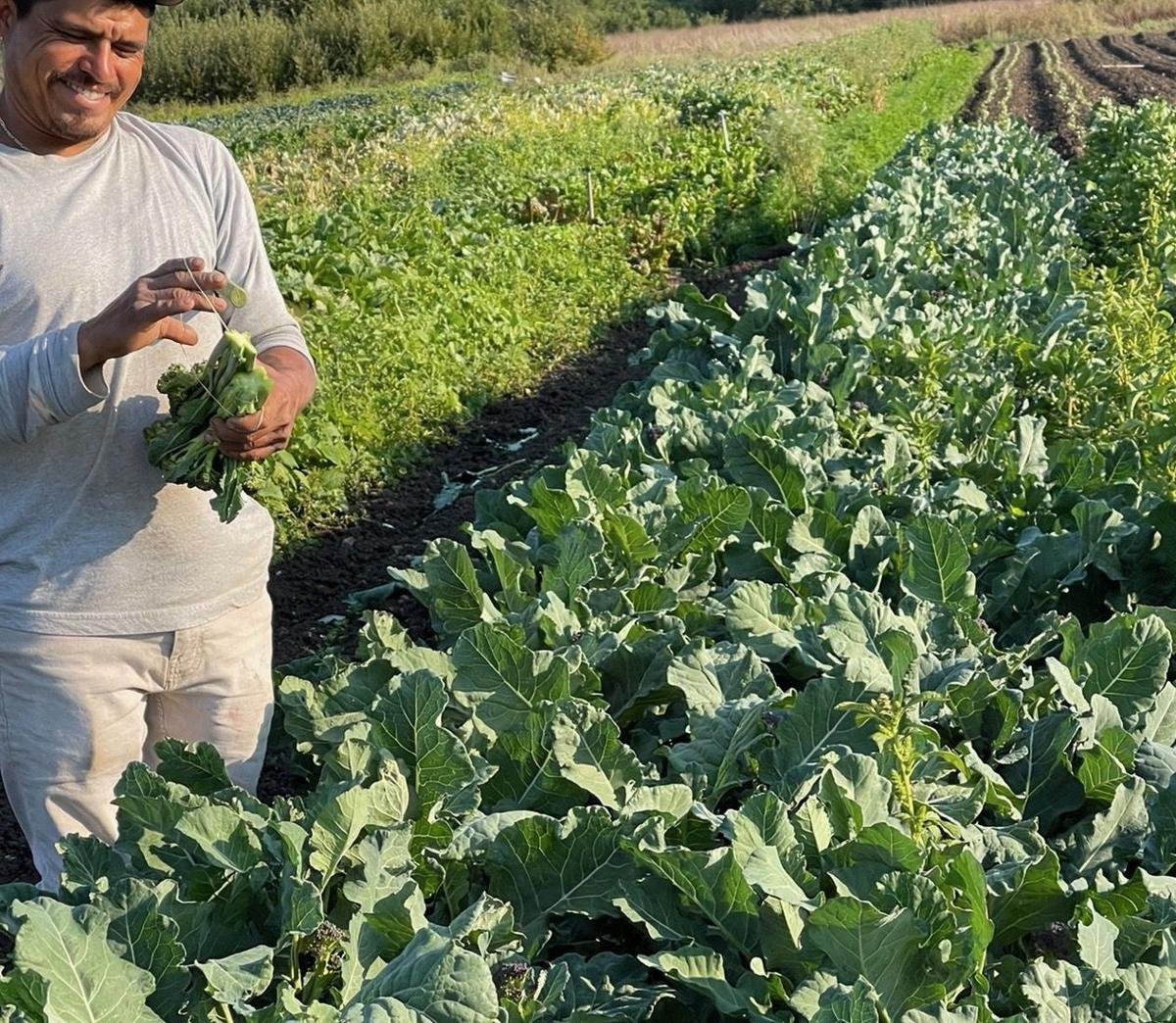
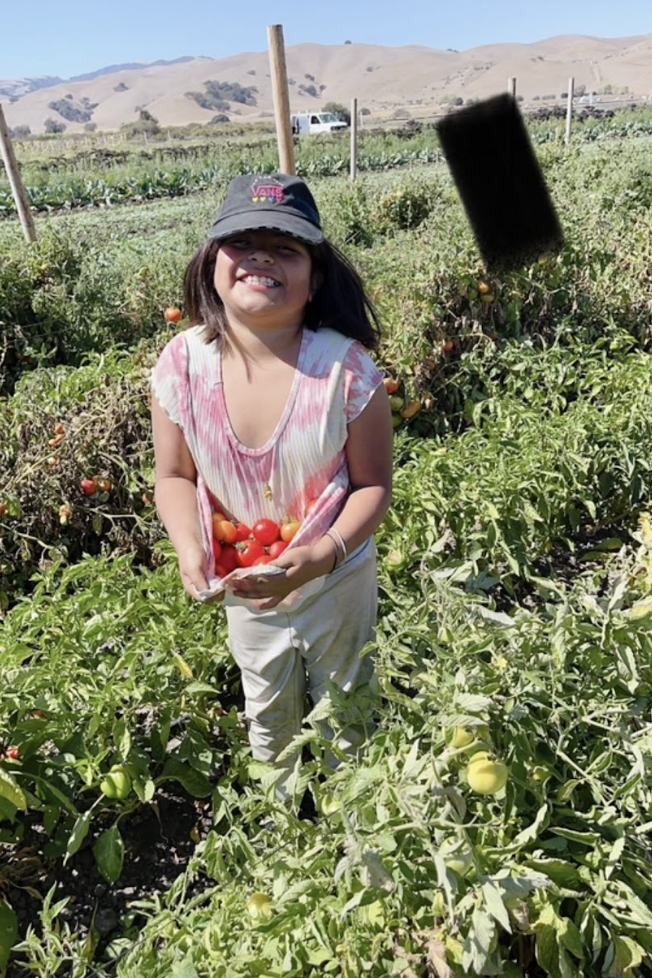
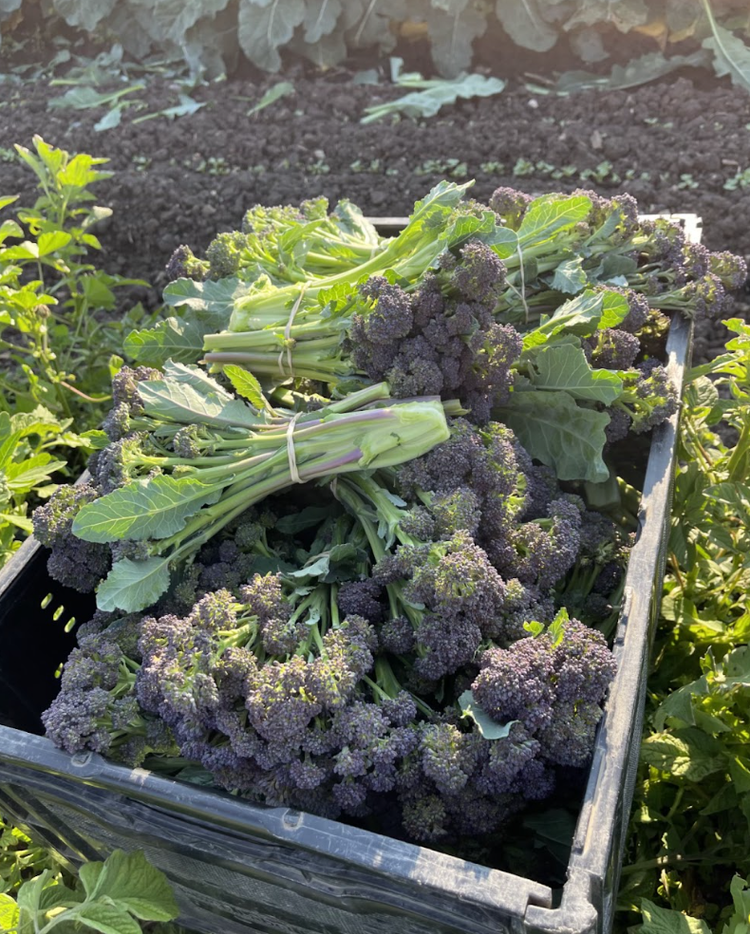
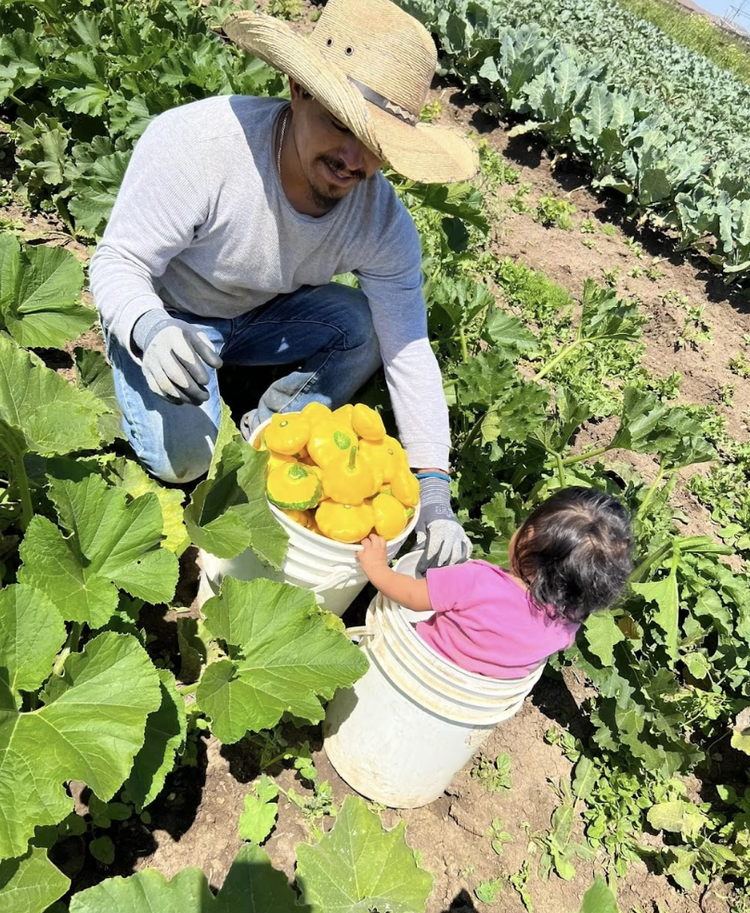
In the initial storm, Nancy’s farm and family were fortunately able to relocate much of her equipment out of flood zones, though she lost 2 acres of her crops to flooding. As the storms continued to sweep across the region, her farm eventually flooded again in March. This time, the effects were much more drastic – not only were 2.5 acres of her farm re-flooded, but Nancy’s home was too. Nancy lost her crops, clothes, furniture, documents, farm equipment, and more as the storm irreparably damaged her house. In all, the damages were estimated at around $30,000 – a massive financial hit for which Nancy was not prepared. Nancy, Jose, and their five children were forced to move into a hotel room as they began to search for a new place to live.
Though the loss Nancy and her family endured was immensely difficult, Nancy stayed strong for her children, grounding in her belief that optimism and hard work could help her find her footing. Her first step towards rebuilding was securing a place to live. Initially, Senior Farm Business Advisor Henry Catalan connected her with the Community Agency for Resources, Advocacy, and Services (CARAS) in the Central Coast, an organization that supported Nancy find and finance a hotel room. As a family of seven, the room proved cramped and unsustainable for them. With little established credit history to fall back on, Nancy had to move through multiple unstable housing situations, causing much distress and disruption for her family. Finally, in September of 2023, she was able to secure an apartment for her family with help again from Henry and CARAS.
Finding relief aid was also crucial to Nancy and her business; after the second wave of storms, Henry was able to help her apply for Federal Emergency Management Agency (FEMA) funding and connected her to local community organizations such as the Watsonville Food Bank that could assist her family as they rebuilt the business. Drawing on the loyal relationships she had cultivated and maintained over the years, Nancy also turned to her community for support. Henry helped organize a GoFundMe to assist with expenses like buying new transplants and tools as well as paying for her hotel room and trailer, and her farmers market community rallied in support of the farm by coordinating donations towards her business. In this time of crisis, Nancy’s committed community was able to come to her and her business’ aid, allowing Nancy and Jose to even plant new strawberries later in 2023. Furthermore, Nancy’s incredible resilience has carried her business forward into the 2024 season, and reconnected her with her dream of purchasing farmland and owning a home.
Even with the immense strength and determination Nancy has shown in the face of this climate catastrophe, the risk of these atmospheric rivers to her business remains at large with very little action she herself can take. Despite the risk of another flood, Nancy and Jose made the decision to stay on their leased land, hoping to maintain their valuable investments in soil health and farm infrastructure as well as save capital for a more permanent move elsewhere. Their ultimate goal is to find a small parcel of quality farmland that they can purchase; one that not only meets their business’ needs but also keeps their family safe and sheltered from future floods. Nancy is actively working towards this vision with Farm Business Advisor Gerardo Fuentes by re-organizing her business management strategy and sourcing crop insurance for the wide variety of vegetables she produces. As Nancy invests in her farm each day, moving closer to her vision of farmland ownership and a more secure future for her family, she’s driven by her personal philosophy: “Doing what you love, you never work a day in your life.”
Support Nancy and Picoso Farm
Napa Farmers Market, Sat 8am-12pm
Martinez Farmers Market, Sun 9am-1pm
Cupertino Farmers Market, Sun 9am-1pm
Moraga Farmers Market, Sun 9am-1pm
Evergreen Farmers Market, Sun 9am-1pm
Seasonal Farmstand in Gilroy
Drought - Kayta and David Plescia of West County Community Farm (North Bay)
[Read time: 7 minutes]
David and Kayta Plescia of West County Community Farm started their farm business in 2017 on a parcel leased at Green Valley Farm & Mill in Sebastopol. They originally met working at Caretaker Farm in Massachusetts, hoping to connect more deeply with the land and their food. Eventually, the two moved west and founded their own venture, what was then called Green Valley Community Farm. Their unique CSA model, inspired by Caretaker Farm, is a free-choice style CSA that includes u-pick produce, flowers, herbs, and berries, on-farm events, and a standing invitation for members to visit the property whenever they’d like. In this way, David and Kayta create openings for community to flourish through their farm.
David and Kayta’s experience farming in the North Bay has been deeply shaped by drought. When they started leasing from Green Valley Farm & Mill in 2017, nobody on the property could remember a time over the past forty years when their water supply, an irrigation pond, had run dry. This was true for their first three years in operation, allowing Kayta and David’s business to find roots in their community. In late 2020, as the drought in California intensified and the landscape in Sonoma County became increasingly parched, the irrigation pond soon became an area of concern when the historically abundant winter rains failed to recharge it to its normal level. By the beginning of 2021, the irrigation pond was almost completely dry.
Drought heavily affects small producers’ livelihoods; a lack of a reliable and consistent water source means that farm businesses, especially those with fewer resources, are highly limited in the crops they can grow and livestock they can raise. While well-resourced businesses often drill new, deeper wells to access more groundwater, this wasn’t an option for Kayta and David. As the pond was David and Kayta’s sole source of irrigation water, they were forced to stop vegetable farming altogether in 2021 and only offer their herb, flower, and berry u-pick program – a decision that was incredibly difficult. With support from Senior Farm Business Advisor Lily Schneider, they were able to calculate a series of cost projections that helped them move forward with the decision, knowing that flexibility and communication with their community would be key to making the change. In the meantime, they pursued other avenues of revenue, with Lily helping them apply to grants and relief funds as well as shift their business plan while they waited to see how the drought would progress. Even still, the future was uncertain as they knew that pausing their vegetable production was only a temporary solution.
Learn More: California’s Droughts
Over the past few decades, California has experienced several historic, multi-year droughts that have severely drained groundwater and reservoirs, with the most recent starting in 2020 and ending in 2023. In Sonoma County, as in many other parts of the state, water reserves have run low. From May until November of 2021, the USDA designated Sonoma County as experiencing a “D4: Extraordinary Drought”, with the overall year being considered Sonoma County’s worst drought year on record. With climate change worsening global droughts and quality land with water access in Sonoma County becoming more scarce and expensive, these droughts not only jeopardize small farms and ranches’ futures but the very foundation of the regional food system.
The 2021 season gave them time to reflect on their long-term business goals and vision. They began conversations to lease a larger property with abundant, reliable well water, a serendipitous opportunity that would allow them to scale up their business for long-term financial viability. Importantly, too, the new property had quality soil, values-aligned landowners, and its close proximity to their previous farmland allowed them to keep many existing customers and save resources. Uprooting and moving their farm was a tough decision, but they were clear on their long-term business vision and goals; thus, they once again turned to Lily, who supported them through their decision-making process of moving properties as well as building cash flow budgets and financial projections. David and Kayta re-established their farm, eventually going on to more than double their CSA members from 2020 to 2024. Now more than ever, David and Kayta are building their business with flexibility in mind. Using the valuable planning approach Lily brought to their business, they have been able to plan out logistics and finances for expanding their farm, adding more CSA members, and even welcoming a child into their family.
When reflecting on the 2021 drought, Kayta and David cite several factors as allowing them to survive – luck, community support, and their ability to adapt and plan for challenges. Before they were connected to their new parcel of land, they were even considering moving out of state due to the sheer lack of available, quality farmland in Sonoma County. David and Kayta know that not all producers will have the same fortune or access to similar resources. For them, food production is a public service, and they hope that food and those that produce it can be additionally supported by state and local governments, especially as small farmers and ranchers face limited water and other resources. In the meantime, as they look towards a future where climate change threatens their farming community, David and Kayta continue to rely on their own adaptability, resilience, and community in order to thrive.
Support David, Kayta, and West County Community Farm
Fire - Caleb Barron of Fogline Farm (San Mateo Coast)
[Read time: 7 minutes]
Caleb Barron of Fogline Farm could see the flames from the CZU Lightning Complex fire across the street on Highway 1. Farming through Fogline since 2010 and on the Año Nuevo Peninsula since 2018, Caleb tends organic fed and pasture-raised chickens across his forty acres. At the time the fire started, he was caring for over eight thousand chickens on his property and employed two farmworkers who were supporting his operation.
When Caleb first joined Fogline, he managed both vegetable and livestock production with the hopes of using regenerative farming practices to restore the land, a formerly conventional flower field. In 2017, he switched from vegetable farming to solely focus on raising broiler chickens, drawing upon his past apprenticeship at Pie Ranch where his love for livestock initially blossomed. As Caleb took on full ownership of the business in 2014, he made a deliberate effort to continue cultivating a close-knit community across his employees, customers, and those farming nearby. These relationships have proven integral to Caleb and Fogline Farm, creating a sense of stability and flexibility for him even when facing difficult obstacles and hardship.
Learn More: CZU and LNU Lightning Complex Fires
The two massive fires burned over 771,000 total acres across Northern California, with the CZU Lightning Complex fire burning over 400,000 acres on the San Mateo Coast and the LNU Lightning Complex fire burning 360,000 acres across Yolo, Solano, Lake, Napa, and Sonoma Counties. Started by a series of lightning strikes, the fires spread quickly, fueled by accumulated vegetation that was kept especially dry by the 2020 California megadrought. With the natural fires and Indigenous burning practices heavily suppressed over the past few decades, the amount of leftover fuel was particularly abundant – leading to a devastating series of fires that forced over 48,000 people to evacuate.
Caleb was one of the many producers on the San Mateo Coast as well as in the North Bay and Yolo and Solano Counties who were severely affected by both the CZU Lightning Complex fire and the LNU Lightning Complex fire of 2020. Farmers and ranchers were forced to either abandon their businesses completely for that time period, losing precious and valuable infrastructure, crops, and income, or face extreme health and logistical obstacles, such as navigating barricades and fires, power outages, health risks from extended time in smoke and ash, water unavailability, and safety concerns from operating in a fire zone.
When the fires hit, the first thing Caleb did was to evacuate his employees and their families with help from Puente, a community resource center that supports the Latino farmworking community on the San Mateo County South Coast. Once they were safe, Caleb then turned to his business. He was unable to evacuate his poultry, knowing the chickens would likely not survive the heat and stress of transport. Caleb had no choice but to keep working on his farm to ensure the safety of his business despite the danger of the nearby fires and the smoke and ash in the air. With several barricades limiting his access to his farm, Caleb turned towards his farmer and rancher community to coordinate relief efforts and source information. Working alongside folks from Pie Ranch, Brisa Ranch, Corvis Farm, and Rancho Siempre Verde, Caleb was a part of a group chat of nearby farmers and ranchers providing updates on the status of the fires and coordinating multi-farm relief efforts for the community as a whole. In this way, a strong culture of mutual aid was uplifted – a social phenomenon that helped many of the farm and ranch businesses stay afloat during the fires. Across the San Mateo Coast, farmers and ranchers were opening up their farms and ranches to one another, providing resources and support to those more vulnerable and restricted from their farms.
The woods near Alba Road
Green Oaks Creek, completely dried up
During the three-week fire period, Caleb found a way to get to his farm every day — he would drive from Santa Cruz to the outskirts of the Año Nuevo Peninsula, negotiate his way through the roadblocks, and then drive 20 miles north on a deserted and smoky Highway 1 till he could reach his farm. Once there, he attended to his chickens and checked on the other properties in his area to assist those who were unable to access their land. Throughout his day, Caleb would drive to the one area with reliable cell service to check in both on his family and the group chat of farmers and ranchers to see what folks needed. Among these daily challenges, Caleb also witnessed firsthand the immense amount of loss the community endured. One day as he was driving towards his own farm, he saw a massive fire engulfing Pie Ranch’s old steel farmhouse. He was first on the scene, watching helplessly as the fire consumed the property.
Caleb himself was lucky -- the fire never crossed Highway 1 to reach his property. But other farms around him were not as fortunate, losing crops, infrastructure, tools, and buildings. Despite the harsh conditions and trauma, Caleb always strove to maintain a positive outlook, looking ahead to the future and focusing on how he could support instead of dwelling in the past.
KTA Farm Business Advisor James Nakahara with his Wildland Firefighter 2 cohort
As Caleb and other San Mateo Coast farmers and ranchers were scrambling to survive and adapt their businesses, KTA farm business advisors were supporting impacted clients individually, helping them secure crop insurance, shift their market channels, and modify production strategies in preparation for future crises. In particular, despite local outcry and requests for federal and state-level support, one key resource, fire insurance, proved extremely difficult for folks to obtain due to its increasingly high cost and was a process that many business advisors navigated with their clients. Alongside assisting clients in these ways, KTA also collaborated with regional partners to share in the leadership and management of the California BIPOC Farmer and Land Steward Relief fund, a fund that was directly channeling grants to BIPOC producers and land stewards affected by climate crises.
Though he was not working at KTA at the time of the fires, KTA Farm Business Advisor James Nakahara was deeply entrenched in the San Mateo Coast agricultural community and participated in the mutual aid that provided relief to many farms and ranches. A couple months later, when James joined KTA as a farm business advisor for the San Mateo Coast and East Bay, he knew he wanted to deepen his own understanding around fire. In the summer of 2022, James trained and became Wildland Firefighter 2 certified, hoping to use his experience to better serve and support his clients. James also witnessed many folks in the agricultural community self-educate around fire safety, even engaging in prescription burns and joining volunteer firefighting organizations.
Fire remains on the mind of many farmers and ranchers on the San Mateo Coast as producers stay vigilant and now have emergency plans at the ready. But above all, what arose from the fires and is ever-present on the coastside was a deeper sense of community via a grassroots network of support that sustained many businesses during crisis. As folks on the coast look into the uncertainty of the future, they are able to draw on the strength of their shared resilience to weather future catastrophes — not just as individual businesses, but as an interconnected foodshed.
Our Communal Responsibility
[Read time: 2 minutes]
Over the past 10 years of supporting small sustainable farmers and ranchers, we have witnessed the impacts of the constantly evolving threat of climate change. At KTA, we are deepening into a dual strategy of both responding directly to climate crises and helping farmer and rancher clients build broader resilience and preparedness for the future. Navigating climate change is a fundamental lens through which we deliver our client advising program and collaborate with our Ecosystem Building partners on projects that increase equitable access to land, capital, and markets. In our advising work, this can look like assisting clients in securing relief funds during times of crisis while also connecting them with climate-smart agriculture resources for their ongoing production. Within our Ecosystem Building program, projects we are guiding and supporting like the Fondo Solidario – a revolving loan fund led by Latina farmers that provides capital for emergent needs and business investment – and the San Mateo Coast Food Hub – a nascent regional food hub with a goal of providing aid to producers during crisis – demonstrate how we are following the leadership of our clients around strengthening climate resilience. In this work and more, KTA’s approach centers on being responsive to client crises, supporting clients’ adaptation during recovery, and identifying and building the long-term resilience that both our clients and planet need.
How KTA is Supporting Clients
Securing emergency housing and food
Developing financial projections and transition plans for land purchases out of disaster-prone areas
Evaluating the climate risks associated with land purchases or leases
Checking on the safety and wellness of clients and their families during crisis
Identifying and applying for emergency relief funds
Migrating sales channels
Connecting clients to partner organizations
Partnering with other kindred organizations to raise relief funds
The work of climate change recovery and mitigation necessitates deep cooperation among all of us as caretakers of this planet. Uplifting the farmers and ranchers who are not only directly affected by climate change but are also actively working to mitigate the impacts is a communal responsibility.
If you’re not already, we invite you to be part of this collaboration by finding your unique way to contribute through the opportunities below. In this era of profound climate transformation, we know that the wisdom for safeguarding resilient ecosystems lies with land stewards and producers while the power to support their stewardship lies with each of us.
Take Action
-
KTA’s client farmers and ranchers in need of crisis support
KTA to support climate crisis response and preparedness through our 1:1 Business Advising and Ecosystem Building work
Community Alliance with Family Farmers’ (CAFF) California Family Farmer Emergency Fund, a fund that offers direct financial support to small-scale farmers impacted by disaster
The Latino Community Foundation’s California Wildfire Relief Fund and the Just Recovery Partnership, a unique model that unites community leaders and their infrastructure to prioritize collective power-building
-
HEAL Food Alliance to co-create a vision for the Farm Bill that supports a thriving future for our planet and all people, especially BIPOC producers
California Climate & Agriculture Network (CalCAN) as they call for a climate bond measure that includes vital investments towards building a just and resilient food system
Community Alliance with Family Farmers (CAFF) for state and national policies that create more resilient family farms, communities, and ecosystems
-
KTA’s Love Local Guide to buy direct from and support our client farmers and ranchers
Local food hubs, such as FEED Cooperative and Capay Valley Farm Shop, that build stability, accessibility, and flexibility for small farms and ranches across local food networks
Photo credits: Namu Farm by Nicola Parisi, Picoso Farm, West County Community Farm, James Nakahara, West Cliff Collective, Paige Green

